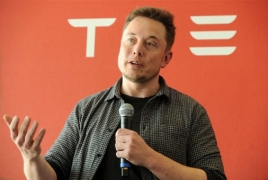
Building a mass-market electric vehicle and colonizing Mars aren’t ambitious enough for Elon Musk. The billionaire entrepreneur now wants to merge computers with human brains to help people keep up with machines, The Wall Street Journal reports.
The founder and chief executive of Tesla Inc. and Space Exploration Technologies Corp. has launched another company called Neuralink Corp., according to people familiar with the matter. Neuralink is pursuing what Musk calls “neural lace” technology, implanting tiny brain electrodes that may one day upload and download thoughts.
Musk has taken an active role setting up the California-based company and may play a significant leadership role, according to people briefed on Neuralink’s plans, a bold step for a father of five who already runs two technologically complex businesses.
Musk didn’t respond to a request for comment. Max Hodak, who said he is a “member of the founding team,” confirmed the company’s existence and MMusk’s involvement. He described the company as “embryonic” and said plans are still in flux but declined to provide additional details. Mr. Hodak previously founded Transcriptic, a startup that provides robotic lab services accessible over the internet.
Musk, 45 years old, is part businessman, part futurist. He splits his time between Tesla, which is under pressure to deliver its $35,000 Model 3 sedan on time, and SpaceX, which aims to launch a satellite-internet business and a rocket that can bring humans to Mars. He is also pushing development of a super high-speed train called Hyperloop.
Somewhere in his packed schedule, he has found time to start a neuroscience company that plans to develop cranial computers, most likely to treat intractable brain diseases first, but later to help humanity avoid subjugation at the hands of intelligent machines.
“If you assume any rate of advancement in [artificial intelligence], we will be left behind by a lot,” he said at a conference last June.
The solution he proposed was a “direct cortical interface”—essentially a layer of artificial intelligence inside the brain—that could enable humans to reach higher levels of function.
Musk has teased that he is developing the technology himself. “Making progress [on neural lace],” he tweeted last August, “maybe something to announce in a few months.” In January he tweeted that an announcement might be coming shortly.
He hasn’t made an official announcement, but Neuralink registered in California as a “medical research” company last July.

